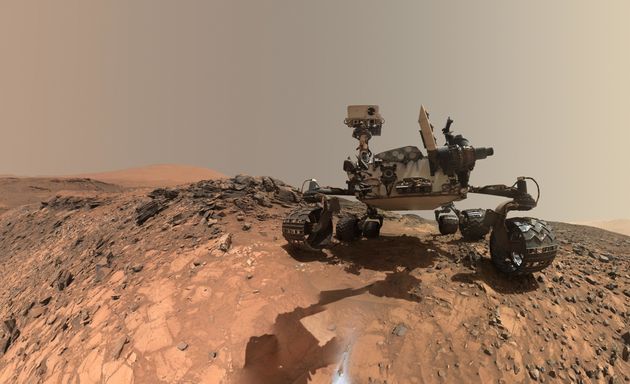NASA’s Curiosity rover on Mars has found complex organic matter on the surface of the red planet.
The organic molecules were discovered inside some sedimentary rocks within an ancient lake bed that existed around 3 billion years ago. The finding is our strongest evidence yet that at one time in the past, Mars may have been able to support what we would know as alien life.
There is already plenty of evidence to suggest that billions of years ago Mars was far from the dry and barren planet we see today. Instead it’s believed that the red planet have had an atmosphere that supported vast oceans of liquid water and within that water may have flourished organic life.

While the discovery of organic molecules is significant, it’s not a direct indicator that life may have existed on Mars.
“With these new findings, Mars is telling us to stay the course and keep searching for evidence of life,” explains Thomas Zurbuchen, associate administrator for the Science Mission Directorate at NASA Headquarters. “I’m confident that our ongoing and planned missions will unlock even more breathtaking discoveries on the Red Planet.”
In addition to finding these organic molecules, Curiosity was also able to make a major new discovery surrounding Mars’ atmosphere.
We already knew that Mars’ atmosphere contained large unpredictable plumes of methane gas, what we didn’t fully understand is where the gas is coming from.
Thanks to the extended time period that Curiosity has spent on Mars it has actually been able to detect seasonal variations in how the methane is produced, and where it settles throughout the year.
“This is the first time we’ve seen something repeatable in the methane story, so it offers us a handle in understanding it,” said Chris Webster of NASA’s Jet Propulsion Laboratory (JPL).
While these two findings aren’t definitive evidence of life outside of Earth, they take us a tantalising step closer to finally having that answer.
“Are there signs of life on Mars?” said Michael Meyer, lead scientist for NASA’s Mars Exploration Program, at NASA Headquarters. “We don’t know, but these results tell us we are on the right track.”